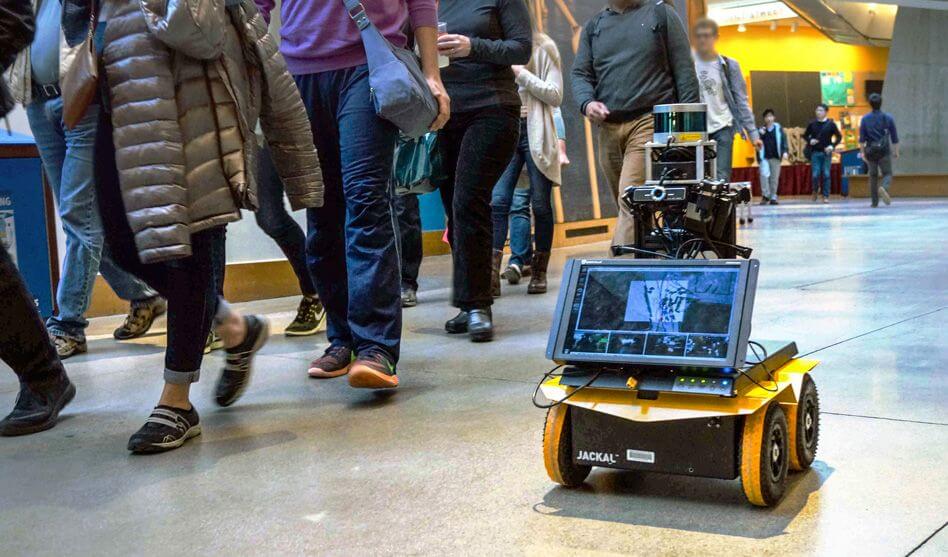
The algorithms by which robots calculate the trajectory of its movement from point “A” to point “B”, there are enough long. This is not surprising. However, the movement of the robot in a place with heavy pedestrian traffic – a task much more difficult. After all, you need to move according to the generally accepted rules and norms, trying not to get in the way of the people. Engineers at mit have developed an algorithm for just such cases and have successfully tested it.
The robot participated in field testing were equipped with multiple RGB cameras and a scanning LiDAR sensor. Software included face detection of the people around them to react to their appearance in the field of view of the robot and to track the trajectory of movement of pedestrians relative to its current position. The robot carefully paves the route, trying to avoid the static obstacles and not to interfere with going ahead people. The average speed is 1.2 meters per second.

This robot not only takes care of the obstacles in your path and calculates the trajectory of movement of pedestrians, but also tries to adhere to social norms in a given country. In the U.S., as in Russia, people are accustomed to right-hand movement. Therefore, the robot tries to huddle to the right side of doorways and corridors that crosses. Settings you can change to alternative, then the robot will take off as normal movement on the left side.
To sponsor the MIT project came from American car company Ford. The results of the study will be published in the forthcoming conference of the Institute of electrical and electronics engineers devoted to the development of robotics, which will be held next month.
At MIT taught a robot the rules of movement in public areas
Sergey Grey